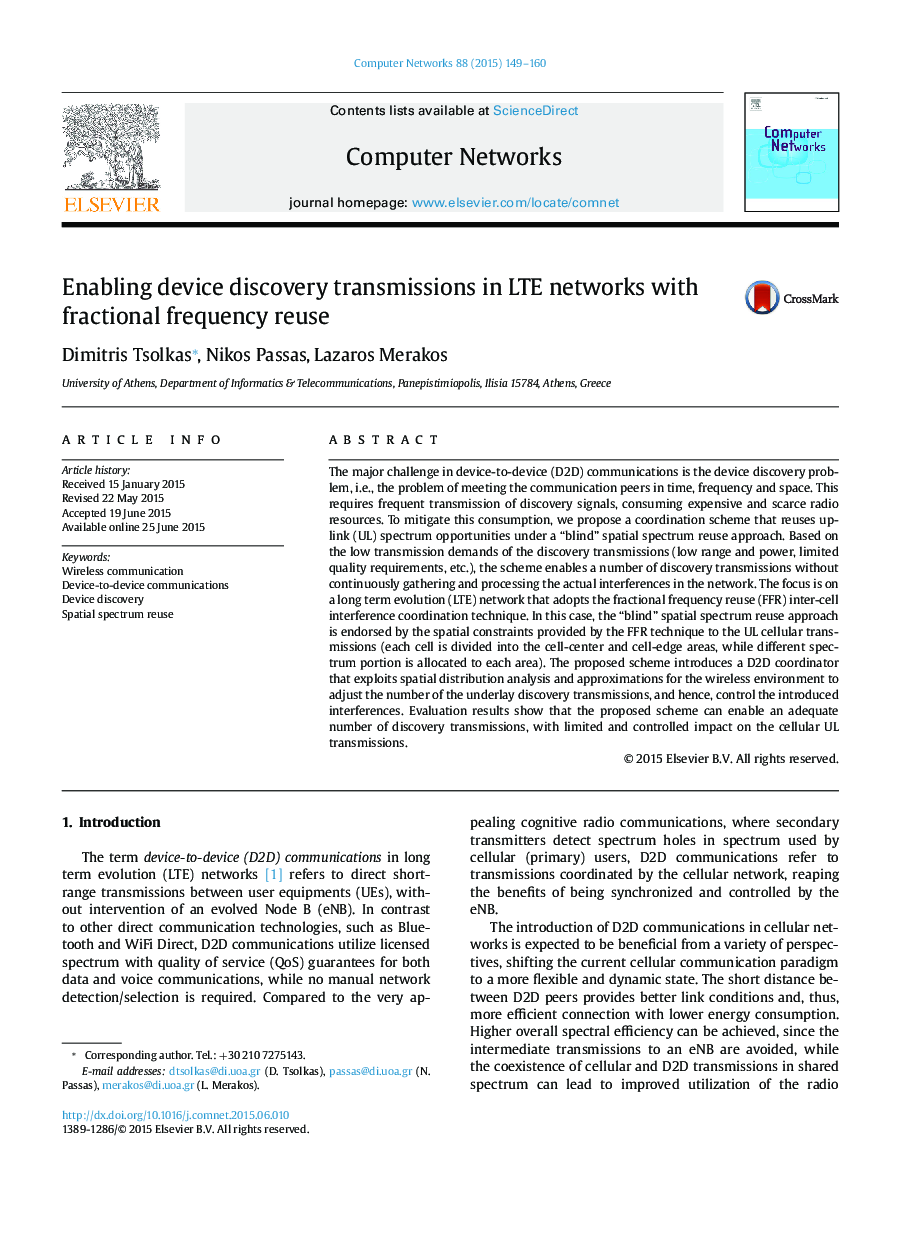| Article ID | Journal | Published Year | Pages | File Type |
|---|---|---|---|---|
| 451664 | Computer Networks | 2015 | 12 Pages |
The major challenge in device-to-device (D2D) communications is the device discovery problem, i.e., the problem of meeting the communication peers in time, frequency and space. This requires frequent transmission of discovery signals, consuming expensive and scarce radio resources. To mitigate this consumption, we propose a coordination scheme that reuses uplink (UL) spectrum opportunities under a “blind” spatial spectrum reuse approach. Based on the low transmission demands of the discovery transmissions (low range and power, limited quality requirements, etc.), the scheme enables a number of discovery transmissions without continuously gathering and processing the actual interferences in the network. The focus is on a long term evolution (LTE) network that adopts the fractional frequency reuse (FFR) inter-cell interference coordination technique. In this case, the “blind” spatial spectrum reuse approach is endorsed by the spatial constraints provided by the FFR technique to the UL cellular transmissions (each cell is divided into the cell-center and cell-edge areas, while different spectrum portion is allocated to each area). The proposed scheme introduces a D2D coordinator that exploits spatial distribution analysis and approximations for the wireless environment to adjust the number of the underlay discovery transmissions, and hence, control the introduced interferences. Evaluation results show that the proposed scheme can enable an adequate number of discovery transmissions, with limited and controlled impact on the cellular UL transmissions.
